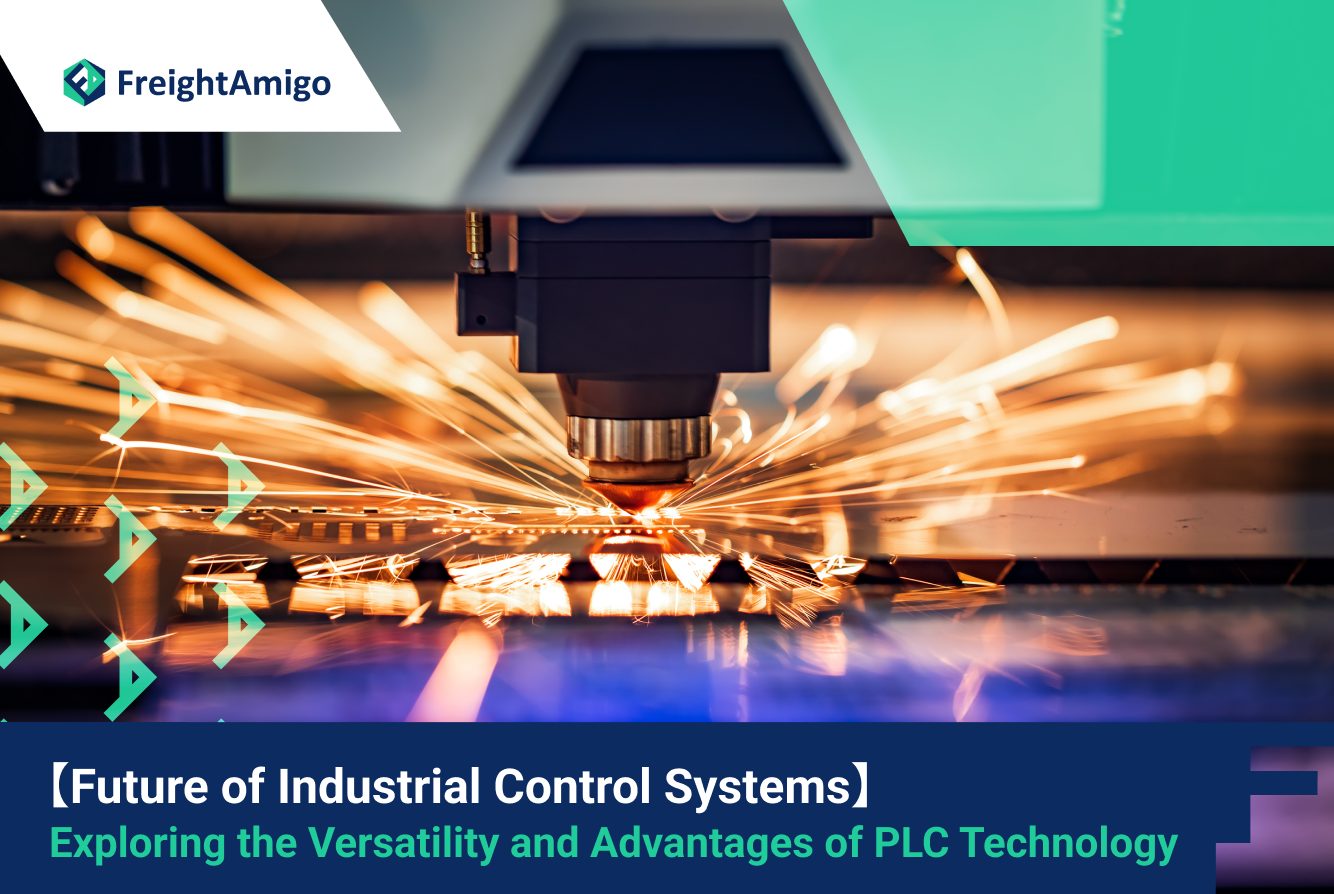Author Name: Tiffany Lee – Marketing Analyst at FreightAmigo
Introduction to Industrial Control Systems
Industrial control systems (ICS) play a crucial role in managing and automating various processes in industries such as manufacturing, energy, and transportation. These systems are responsible for ensuring seamless operations, monitoring and controlling machinery, and maximizing efficiency. One of the key technologies that have revolutionized the field of ICS is the Programmable Logic Controller (PLC). In this article, we will delve into the world of PLC technology, exploring its versatility and the advantages it brings to industrial control systems.
Want To Compare The Best Express, Air Freight, Sea Freight, Rail Freight & Trucking Rates So As To Have Better Control On Cost?
What is a Programmable Logic Controller (PLC)?
A Programmable Logic Controller, commonly known as a PLC, is a specialized computer system that is widely used in industrial control systems. It is designed to withstand harsh environments, making it ideal for use in factories and other industrial settings. The primary function of a PLC is to monitor and control various processes and machinery by receiving input signals from sensors, processing the data, and providing output signals to actuators. This allows for the automation and optimization of complex industrial processes.
Advantages of PLC Technology in Industrial Control Systems
PLC technology offers several significant advantages over traditional control systems, making it the preferred choice in industrial settings. One of the key advantages is the flexibility and versatility it provides. PLCs are programmable, allowing for easy reconfiguration and customization according to specific industrial requirements. This flexibility enables industries to adapt quickly to changing production needs without the need for extensive rewiring or hardware modifications.
Another advantage of PLC technology is its reliability. PLCs are built to withstand extreme temperatures, vibrations, and other harsh conditions commonly found in industrial environments. They are highly durable and have a long lifespan, minimizing the risk of system failure and costly downtimes. Additionally, PLCs have built-in redundancy features that ensure continuous operation even if one component fails, further enhancing the reliability of the system.
Furthermore, PLC technology offers advanced diagnostics and troubleshooting capabilities. PLCs are equipped with extensive monitoring and logging functionalities, allowing for real-time data collection and analysis. This enables industries to identify and rectify issues promptly, reducing maintenance costs and improving overall system performance.
Components of a PLC System
A typical PLC system consists of several key components that work together to ensure the smooth operation of industrial control systems. The central component is the PLC itself, which houses the processor, memory, and input/output (I/O) modules. The processor executes the program, while the memory stores the program and data. The I/O modules act as the interface between the PLC and the external world, receiving input signals from sensors and providing output signals to actuators.
In addition to the PLC, a typical system includes various types of sensors for detecting physical parameters such as temperature, pressure, and position. These sensors provide the necessary input signals to the PLC, enabling it to monitor and control the industrial processes effectively. Actuators, such as motors, valves, and solenoids, are responsible for carrying out the desired actions based on the output signals received from the PLC.
Common Applications of PLC Technology
PLC technology finds application in a wide range of industrial processes and systems. One of the most common applications is in manufacturing plants, where PLCs are used to control assembly lines, monitor production parameters, and ensure product quality. PLCs are also extensively used in power plants to manage and control the generation, transmission, and distribution of electricity.
Another area where PLC technology is widely employed is in transportation systems. PLCs are used to control traffic lights, railway signaling systems, and airport baggage handling systems, ensuring smooth and safe operations. PLCs are also utilized in wastewater treatment plants to monitor and control the treatment processes, optimizing resource usage and minimizing environmental impact.
Challenges and Limitations of PLC Systems
While PLC technology offers numerous advantages, it is not without its challenges and limitations. One of the primary challenges is the complexity of programming and maintaining PLC systems. As industrial processes become more advanced and interconnected, the complexity of the underlying control logic increases. This requires skilled programmers and engineers to develop and maintain the PLC programs, resulting in higher costs and longer development cycles.
Another limitation of PLC systems is the lack of real-time capabilities. PLCs are designed to execute control logic sequentially, which may introduce delays in critical applications that require real-time response. While modern PLCs have improved response times, they may not be suitable for applications that demand ultra-fast control, such as high-speed manufacturing processes or robotics.
Furthermore, PLCs are not well-suited for handling large-scale data processing and analytics. They are primarily designed for control and monitoring purposes and may lack the computational power and storage capacity required for advanced data analysis. Integrating PLC systems with higher-level data processing platforms can help overcome this limitation.
Future Trends in PLC Technology
The future of PLC technology looks promising, with several trends shaping its development and adoption in industrial control systems. One such trend is the integration of PLCs with the Internet of Things (IoT). By connecting PLCs to the internet, industries can gather real-time data from various sensors and devices, enabling more advanced analytics, predictive maintenance, and remote monitoring capabilities.
Another trend is the adoption of cloud-based PLC systems. Cloud computing offers scalability, flexibility, and cost-efficiency, making it an attractive option for industries seeking to optimize their control systems. Cloud-based PLC systems enable centralized control and management, real-time data storage and analysis, and remote access from anywhere in the world.
Furthermore, advancements in artificial intelligence and machine learning are expected to have a significant impact on PLC technology. AI-powered PLC systems can learn from historical data, optimize control strategies, and adapt to changing conditions in real-time. This can lead to improved energy efficiency, reduced downtime, and enhanced system performance.
Conclusion
The versatility and advantages of PLC technology make it a vital component in modern industrial control systems. Its flexibility, reliability, and advanced diagnostics capabilities enable industries to automate and optimize complex processes, improving productivity and efficiency. Despite the challenges and limitations, PLC technology continues to evolve, with trends such as IoT integration, cloud-based systems, and AI-driven automation driving its future development. As industries embrace the potential of PLC technology, the future of industrial control systems looks promising, paving the way for a more connected and efficient industrial landscape.
There Are Different Options For Cargo Transportation. If You Want To Choose The Most Convenient And Suitable Solution, It Is Best To Have The Full Support Of Logistics Experts! If You Are Planning To Ship Goods Overseas, Please Go To The FreightAmigo Page For Inquiries.
===
Read More:
【Export of USA】 A Gateway to Success and Global Economic Influence
The Key Trade Partners of the USA: Boosting International Commerce
【Export of USA】 US-China Trade War’s Influence on USA’s Export Industry
===
If you have any inquiries on logistics/supply chain, feel free to contact FreightAmigo now:
Chat with us online OR
Phone : +852 28121686
WhatsApp: +852 27467829









































